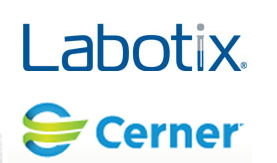Never before has a major LIS vendor boldly acquired a lab equipment manufacturer with an intent to integrate and sell both products as a bundle to medical laboratories
In an unexpected move, healthcare informatics giant Cerner Corporation (NASDAQ: CERN) purchased a clinical laboratory automation company. On Monday, Cerner announced that it acquired Labotix Automation Inc., of Peterborough, Ontario.
Cerner Gains Foothold in Market for Medical Laboratory Automation
The acquisition gives Cerner an interesting foothold in the clinical laboratory automation market. For many pathologists and medical laboratory managers, the deal raises interesting questions, since Cerner—primarily known among labs for its laboratory information system (LIS) and its anatomic pathology laboratory information system (PLIS)—now is the owner of a company that manufactures hardware.
The purchase price and other terms of the sale were not disclosed. Also, Cerner said the acquisition was not expected to have a material effect on financial results this year.
Labotix Sells an Open Automation Solution for Clinical Labs
The flagship product for Labotix is what it calls the Rapid Response Universal Specimen Handling (RRUSH) system. One distinguishing feature about this lab automation system is that it is open source. It transports and sorts specimen containers, then delivers them to the appropriate analyzers for processing or storage. Labotix has systems installed at five client clinical laboratories in the United States, Europe, and the Middle East. The company has 22 associates and contractors.

Cerner Corporation’s acquisition of Labotix, a manufacturer of automation systems for clinical laboratories, caught many in the medical laboratory testing industry by surprise. It will be the first time a major LIS vendor has acquired a lab hardware manufacturer with the assumed intent to sell a bundle that would feature both its LIS and its newly-acquire laboratory automation equipment.
Based in Kansas City, Missouri, Cerner has 700 clinical laboratory clients worldwide using its LIS. It also has placed electronic health record (EHR) systems in some 10,000 facilities worldwide, including more than 2,700 hospitals, 4,150 physician practices, 45,000 physicians, and 550 ambulatory facilities. It has 12,000 employees.
“Previously, Cerner did not have a lab automation system,” Labotix President and CEO John Gustafson told Dark Daily. “They have a laboratory information system and this acquisition gives them a line of laboratory automation equipment that is very complimentary.
“The open source architecture allows medical laboratory users to connect any lab analyzers or other instruments to the RRUSH system,” Gustafson added. “Our clinical laboratory automation solutions can thus connect to any analyzer from any manufacturer, or to any middleware provider, or to any LIS. We have had systems in the field for 10 to 12 years, which is a very long life cycle for an automation system.”
Labotix Was Founded in 1991
Founded in 1991, Labotix was seeking an investor or a strategic partner for a number of years. “In 2004, an investor group acquired the company and its assets and has been focused on open systems,” Gustafson explained. “In recent years, we have looked for a partner who shared our vision for open systems.”
Labotix can trace its roots back to the late 1980s. That is when Rodney S. Markin, , M.D., Ph.D., was developing early lab automation systems at the University of Nebraska in Omaha. In 1993, Markin founded LAB-InterLink, Inc., based in Omaha. By 2000 the company had merged with Labotix in Ontario. A pioneer in laboratory automation, Markin is the currently Associate Vice Chancellor for Business Development and Chief Technology Officer at the university and a Professor in the UNMC Department of Pathology and Microbiology and Medical Director, Laboratory Informatics.
Two years ago, Labotix acquired Integrated Laboratory Automation Solutions, Inc. (iLAS) of Troy, Michigan, and hired the iLAS employees. The terms of the deal were not disclosed. iLAS had a total laboratory automation (TLA) system that was designed by pathologists at Detroit Medical Center in Michigan.
New Business Strategy to Integrate and Sell an LIS and Lab Automation
In terms of business strategy, the action by an LIS company to acquire a company that manufactures laboratory automation systems is a first. For this reason, pathologists and medical laboratory executives will watch closely to see what additional value Cerner can incorporate into the laboratory automation equipment made by Labotix.
Moreover, this acquisition may be a harbinger of other acquisitions. As hospitals and physicians form accountable care organizations to integrate the delivery of care, healthcare vendors may seek to develop more fully integrated individual products. From that perspective, a total laboratory automation system that is fully integrated with a major LIS might allow both components to function at higher levels of reliability and productivity.
—Joseph Burns
Related Information:



